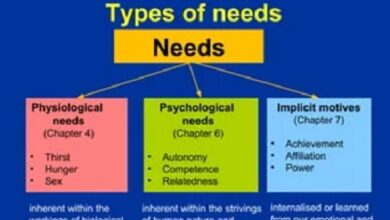Reverse psychology definition phases and how to use it
Reverse psychology
The definition of Reverse psychology is persuading someone to do something by asking them to do the opposite. For example, a disobedient child is instructed not to ask for his room with the intention of ordering it.
This technique is based on the psychological phenomenon of reactance, in which a person refuses to be persuaded and chooses the opposite option to the one suggested. It is often used in children because of their tendency to react reactively, a desire to restore freedom of action.
Another example: a father who suggests to his teenage son that he is stingy because he doesn’t buy his sister a birthday present. The boy reacts by buying a nice present. Another example would be when a shy boy starts talking to girls when they suggest he is not interested in them.
History
Reverse psychology was described by the famous physician and writer Viktor Frankl during the last century. This technique is more complex than it appears, so its use and effectiveness has been questioned many times and should be used with caution.
This Austrian psychiatrist and neurologist introduced the concept of reverse psychology through his own clinical practice, that is, when dealing with psychiatric patients in his office.
In fact, Viktor Frankl started asking the following question directly to depressive, unstable or multi-problem patients: “Why don’t you commit suicide?”
Obviously, the psychiatrist did not want his patients to commit suicide, on the contrary, but he began to use the formulation of these ideas in his own therapeutic plan for mental illness. And, in doing so, most patients imagined the event of their death, and in doing so, many found some reason not to commit suicide.
In this way, Frankl used the reasons found by patients for not committing suicide as a starting point for a psychological treatment that allowed them to find stimuli to avoid suicidal thoughts.
Obviously, this technique was not used without a ton or before anyone who came up with ideas of death or depressive states, since the formulation of the possibility of committing suicide is highly dangerous.
In fact, if this question were asked of a highly depressed person with multiple suicidal thoughts, the result could be catastrophic.
However, Frankl found some use in a reverse psychology technique in the treatment of many psychiatric cases.
More about definition of reverse psychology
Through the techniques applied by Viktor Frankl, a technique known today as reverse psychology emerges. It’s a technique to get someone to do something they really don’t want to.
This fact has been widely publicized in today’s society, especially in non-professional contexts and in everyday life.
Today it is believed that reverse psychology is an especially effective technique in the education of children and adolescents. Specifically, it’s considered a useful technique for kids who don’t usually do it and tend to go against it.
Therefore, before a child who always contradicts the things his mother tells him, he thinks that by saying the opposite he will do what he wanted initially, for the simple reason that he will continue to carry the opposite.
Let’s take an example: if a mother continually tells her son to go and fetch the room and he constantly refuses, it is thought that if he is told not to fetch him, he will order him, in order to continue maintaining the opposite.
Psychological principles
While it is true that some of children’s negative behaviors can be influenced by the orders they are given, reverse psychology is not based on these principles.
The success of inverse psychology lies in what is known as psychological resistance, that is, the difficulty we have in doing something that is imposed on us or that is sent to us, and that interferes with our autonomy or freedom.
In this way, if we use reverse psychology and change the content of the message and the communicative style, the person will be able to modify his attitude in relation to the latent behavior that he should or should not do.
It should be noted that this technique does not always work or should be used in any situation, as it can even cause negative effects. Likewise, it can be a little objectionable, because it is a technique that can involve some manipulation.
However, many people use it these days, both with children and adults, and it can be an effective communication strategy if done properly.
How to apply reverse psychology?
Here are 8 steps to take that must be taken into account if you want to apply reverse psychology properly.
Analyze the person you will perform it for
The use of reverse psychology entails a number of risks; therefore, before doing so, it is important that you analyze the person to whom you will apply it. And it is before using reverse psychology that you need to make it very clear that using this technique does not give you a double chance.
For example, if you tell your child that he is studying for an exam and he ignores it, you decide to use reverse psychology and tell him not to study, he cannot ignore what he just said, and he will have to. Keep the message of not studying.
Obviously, if you apply this strategy in a case where it is not appropriate, what you will get is that your child has more reasons not to study and no longer has a stimulus that encourages him to do so.
For this reason, it is important that you take a good look at the person you want to apply reverse psychology to and try to find out whether or not it might work.
What are your reasons for ignoring it? Can you feel that carrying out the task you have to do is being imposed on you and your autonomy or freedom is cut off? Could this be the reason for refusing to do so?
You need to ask all these questions before using reverse psychology.
Before using reverse psychology, you must make sure that the fact that the person refuses to do a certain behavior is motivated by the difficulty that we make people do something that is imposed on us.
Analyze your relationship with her
Once we have ensured that there is some psychological resistance in the reasons why the person refuses to perform a certain activity, you should analyze the relationship you have with this person.
This fact is important, as we cannot isolate the inverse psychology of the relationship we have with a certain person. In this way, the moment we begin to perceive, the relationship between the two will be affected.
To do this, it is useful to analyze what pattern of behavior the person in question has with himself.
If you indicate that this person has a tendency to contradict you on everything and tends to associate what you say with obligations, guidelines and commandments and therefore in creating a psychological barrier, it may be appropriate to use reverse psychology.
This often happens in children and adolescents, who adopt a communicative style with their parents, in which any message is interpreted as a restriction of their autonomy and freedom.
Thus, in the face of relationships of this type, reverse psychology can have a result in altering the structure of the relationship and transferring responsibility and decision-making power to the adolescent who refuses to be governed and let others decide.
However, this analysis is not so simple. As we said, reverse psychology has no reversal; therefore, the moment you start using it, you cannot ignore it.
Therefore, you must properly analyze whether the person (whether it is a child or not) to whom you will apply meets the minimum requirements to be trusted in order to transfer decision-making power.
analyze behavior
Finally, you must analyze the behavior you intend to modify through reverse psychology and everything that surrounds it.
If I give the person the possibility that he is the one who decides, will he choose the appropriate behavior? To answer this question, several things must be analyzed.
The first is the two we’ve mentioned before, but the third is making sure there aren’t other people who could also act as a psychological barrier.
In this way, if you decide to ask your child not to study so that he is the one who decides to do so, you must ensure that there are no other people, such as family members, teachers or classmates, who keep telling him that he should study.
If that happens, surely the child will still have a psychological barrier in terms of behavior to change and, using reverse psychology, the only thing you will have is to reduce the number of people who bother you, telling you to study.
Say the opposite of what you think in a congruent way
After analyzing the previous three points well, you can apply reverse psychology, that is, you can say the opposite of what you think.
However, you must say it congruently so that the other person perceives your message as true and firm.
So, if you tell your child not to study, you must do it in a serious and credible way, so that the child really thinks that your message is serious and that you are stopping to force him to study.
Watch your communication style
Another very important aspect is the communicative style with which the content of reverse psychology is expressed. Comments are useless “well, don’t study” with a derogatory tone, anger and reproach.
The goal doesn’t have to be to tell him not to study, but to express that you are still forcing him to do it, but that you should express the idea calmly and firmly, so that he realizes that from now on decisions about this matter They will be yours alone.
avoid the discussion
Another aspect closely related to the previous point is the fact of avoiding any discussion on the subject. When you decide to apply reverse psychology, you need to accomplish two goals for it to be effective.
The first is that the person to whom it is applied ceases to see their freedom of decision interrupted in relation to a certain behavior and the second is to ensure that this conduct ceases to be a matter of conflict and discussion.
reaffirm your decision
After applying reverse psychology, you must remain firm in your decision so that it can have an effect. It is usually necessary that, after expressing the message, you repeat it on other occasions to reaffirm your position.
Likewise, it is important that you continue to maintain the same communicative style when expressing these ideas.
So you shouldn’t use the reverse psychology message the same way you used the “original” message. That is, don’t constantly repeat the “don’t study” message as a substitute for the “study” message.
be congruent
Ultimately, the most important aspect of making the reverse psychology message effective is maintaining a completely congruent stance.
This fact implies that you must not only be consistent with the message, always saying the same thing, but that you must be especially consistent with your attitude towards the subject.
The aim is to provide the person with a different structure than before, in which he does not see his decision-making capacity cut off and in which he can make his resolutions autonomously and with the support of others.
So, just as Frankl used the patient’s reason for not living as part of the treatment, you can use your child’s reasons for being involved in a school subject to motivate him to study.




